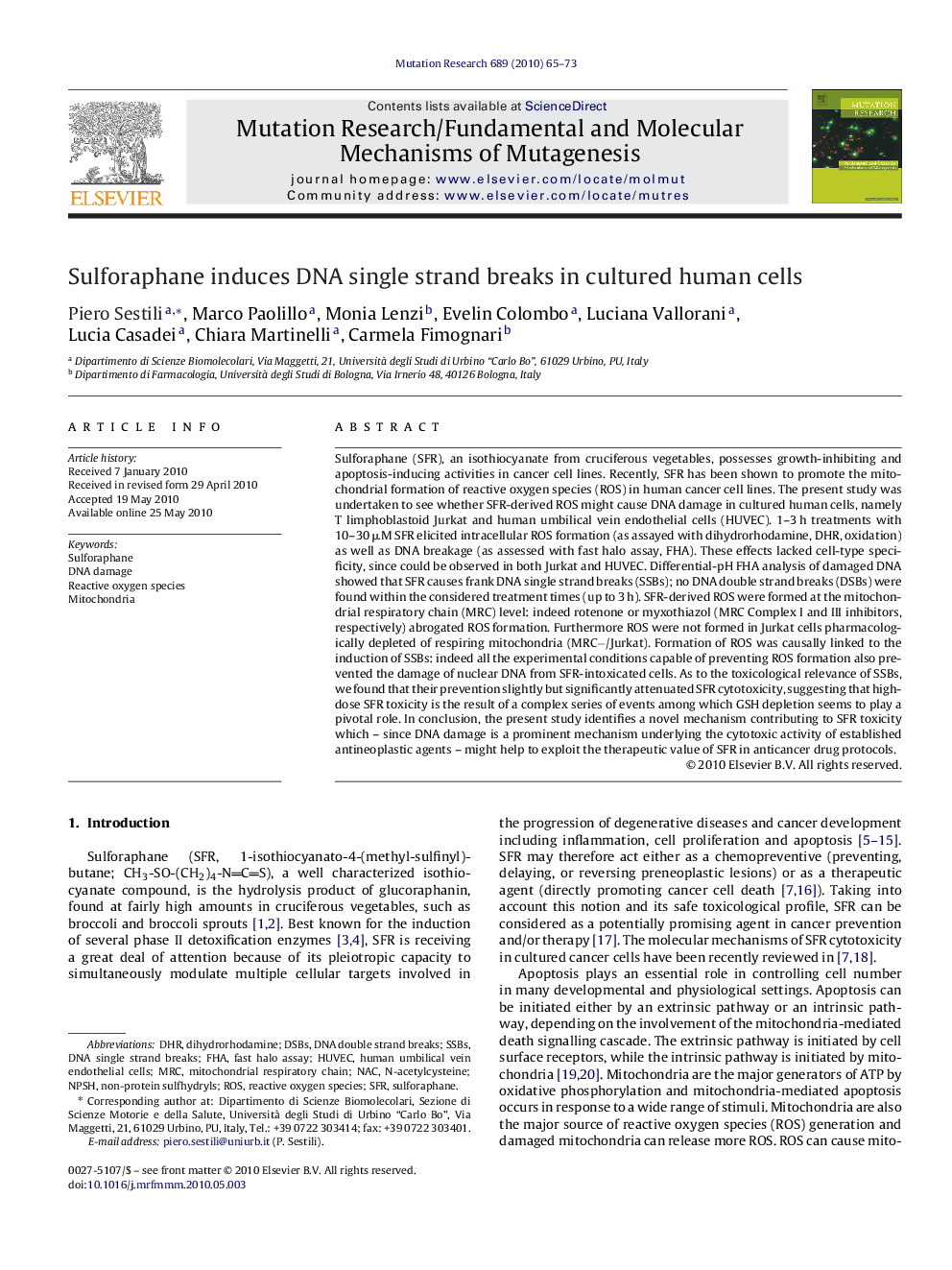| کد مقاله | کد نشریه | سال انتشار | مقاله انگلیسی | نسخه تمام متن |
|---|---|---|---|---|
| 2146831 | 1548373 | 2010 | 9 صفحه PDF | دانلود رایگان |

Sulforaphane (SFR), an isothiocyanate from cruciferous vegetables, possesses growth-inhibiting and apoptosis-inducing activities in cancer cell lines. Recently, SFR has been shown to promote the mitochondrial formation of reactive oxygen species (ROS) in human cancer cell lines. The present study was undertaken to see whether SFR-derived ROS might cause DNA damage in cultured human cells, namely T limphoblastoid Jurkat and human umbilical vein endothelial cells (HUVEC). 1–3 h treatments with 10–30 μM SFR elicited intracellular ROS formation (as assayed with dihydrorhodamine, DHR, oxidation) as well as DNA breakage (as assessed with fast halo assay, FHA). These effects lacked cell-type specificity, since could be observed in both Jurkat and HUVEC. Differential-pH FHA analysis of damaged DNA showed that SFR causes frank DNA single strand breaks (SSBs); no DNA double strand breaks (DSBs) were found within the considered treatment times (up to 3 h). SFR-derived ROS were formed at the mitochondrial respiratory chain (MRC) level: indeed rotenone or myxothiazol (MRC Complex I and III inhibitors, respectively) abrogated ROS formation. Furthermore ROS were not formed in Jurkat cells pharmacologically depleted of respiring mitochondria (MRC−/Jurkat). Formation of ROS was causally linked to the induction of SSBs: indeed all the experimental conditions capable of preventing ROS formation also prevented the damage of nuclear DNA from SFR-intoxicated cells. As to the toxicological relevance of SSBs, we found that their prevention slightly but significantly attenuated SFR cytotoxicity, suggesting that high-dose SFR toxicity is the result of a complex series of events among which GSH depletion seems to play a pivotal role. In conclusion, the present study identifies a novel mechanism contributing to SFR toxicity which – since DNA damage is a prominent mechanism underlying the cytotoxic activity of established antineoplastic agents – might help to exploit the therapeutic value of SFR in anticancer drug protocols.
Journal: Mutation Research/Fundamental and Molecular Mechanisms of Mutagenesis - Volume 689, Issues 1–2, 7 July 2010, Pages 65–73